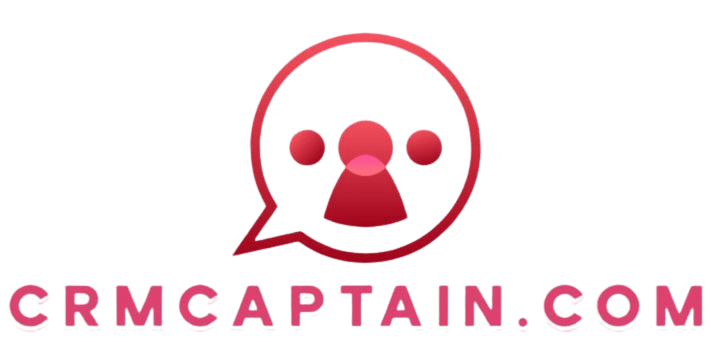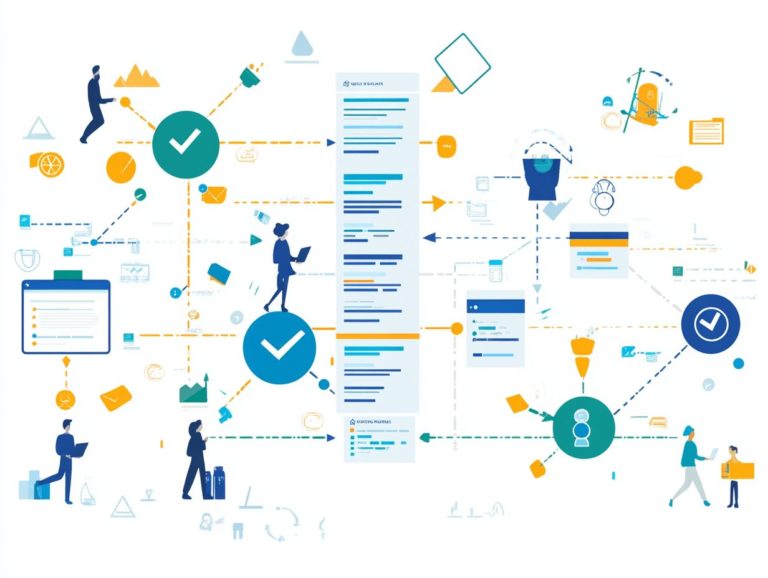Best Practices for Segmenting Your CRM Database
In today s competitive market, grasping the nuances of your customers is more essential than ever.
CRM (Customer Relationship Management) database segmentation emerges as a powerful strategy, helping you customize your marketing efforts, enhance customer relationships, and elevate overall engagement.
By effectively segmenting your database, you can sharpen your targeting and personalization, gain valuable insights into customer behavior, and ultimately drive profitability.
Let s explore how segmentation can transform your marketing strategy! This article examines the benefits of segmentation, key factors to consider, diverse strategies, and best practices for maintaining a robust segmented database.
Don’t miss out! Keep reading to discover how to supercharge your customer interactions today!
Contents
- Key Takeaways:
- Benefits of Segmenting Your CRM Database
- Factors to Consider Before Segmenting Your Database
- Strategies for Segmenting Your CRM Database
- Best Practices for Maintaining a Segmented Database
- Frequently Asked Questions
- 1. What are the benefits of segmenting my CRM database?
- 2. How should I segment my CRM database?
- 3. Can I use CRM software to segment my database?
- 4. How often should I segment my CRM database?
- 5. Are there any common mistakes to avoid when segmenting my CRM database?
- 6. How can I measure the success of my CRM database segmentation?
Key Takeaways:

Improved targeting and personalization lead to increased customer engagement and loyalty.
Understanding customer behavior allows for targeted marketing and better decision-making.
Consistent data maintenance and continual analysis are crucial for maintaining an effective segmented database.
What is CRM Database Segmentation?
CRM database segmentation is all about dividing your customer database into distinct groups based on various criteria, such as demographic, psychographic, behavioral, and transactional data.
By doing this, you can tailor your marketing strategies with precision, leading to improved customer engagement and a boost in customer lifetime value.
When you understand how customers interact with your brand through their purchasing behavior and engagement levels, you can craft marketing messages that truly resonate with your target audience.
You can segment based on geographic criteria or customer journey stages, giving you a multi-faceted view of your audience.
For example, differentiating customers by location allows you to optimize regional campaigns, while journey stage segmentation enables timely, relevant interventions.
When you adopt these methodologies, you unlock the potential for highly personalized marketing efforts. This not only strengthens relationships with customers but also enhances customer support outcomes, as your support teams can better anticipate needs and tailor their responses.
In the end, effective segmentation transforms your data into actionable insights, driving loyalty and satisfaction across the board.
Benefits of Segmenting Your CRM Database
Segmenting your CRM database provides numerous benefits that can significantly enhance your marketing effectiveness and enrich the overall customer experience, especially when you follow best practices for using CRM software.
By leveraging customer segmentation techniques, you can create personalized marketing messages that resonate with your audience’s distinct perspectives and preferences.
This strategic approach improves engagement levels and drives an increase in Customer Lifetime Value.
Improved Targeting and Personalization
Improved targeting and personalization in your marketing efforts are among the key benefits of effective CRM segmentation. By analyzing demographic, psychographic, and behavioral data, you can craft personalized marketing campaigns that resonate with specific customer segments.
This ensures that your marketing messages are not only relevant but also delivered at just the right moment.
This approach boosts customer satisfaction and nurtures brand loyalty, as customers feel valued and understood.
For instance, imagine a skincare brand sending personalized offers based on your past purchases. This makes customers feel special and increases your chances of making a sale.
When customers see that you anticipate their needs, they’re far more likely to remain loyal, encouraging repeat business and generating positive word-of-mouth.
Better Understanding of Customer Behavior
A deeper understanding of customer behavior is a significant advantage of Customer Relationship Management (CRM) segmentation. By examining various data points, such as purchasing habits and engagement patterns, you can uncover valuable insights into what drives your customers’ decisions and preferences.
For instance, a tech company might discover through segmentation that its younger audience leans towards online tutorials. This insight could inspire the creation of a comprehensive video support library that caters to those preferences.
A fashion retailer may identify specific purchasing trends around particular holidays. This could prompt them to launch targeted promotions during peak buying seasons. By harnessing these insights, you can fine-tune your marketing strategies, ensuring that you deliver the right message to the right audience at just the right moment.
Personalizing customer support based on segmented preferences nurtures loyalty, making clients feel understood and valued. This approach ultimately enhances their overall experience with your brand.
Factors to Consider Before Segmenting Your Database

Before embarking on CRM database segmentation, consider these key factors for guaranteed success! Pay particular attention to data quality and the relevance of the segmentation criteria you employ.
High-quality data isn’t just nice to have it’s absolutely essential for effective analysis and sound decision-making. Poor data can lead to misguided marketing efforts and ineffective customer targeting. By prioritizing these elements, you set the stage for impactful and strategic engagement with your audience.
Data Quality and Quantity
Data quality and quantity are critical to the success of your CRM database segmentation. High-quality data is essential for effective analysis and sound decision-making. When your database is well-maintained, the information used for segmentation becomes accurate, relevant, and up-to-date.
Implementing regular data maintenance practices, such as routine audits and cleansing processes, can identify and eliminate inaccuracies. Employing verification techniques can further enhance reliability, ensuring that your data sources remain credible and current.
It s also vital to gather a sufficient quantity of data. This not only aids in creating meaningful segments but also bolsters the insights you derive from data analytics. By addressing both quality and quantity, you can refine your marketing strategies and cultivate stronger relationships with your customers.
Customer Demographics and Behaviors
Customer demographics and behaviors are essential factors to consider when segmenting your CRM database, as they directly shape the segmentation criteria you’ll apply.
By understanding demographic data such as age, gender, income, and geographic location, you can create segments that capture distinct customer profiles. Combining this data with behavioral insights like purchase history and online interactions allows you to personalize your marketing strategies, leading to heightened engagement and improved conversion rates.
For instance, a retail brand might analyze behavioral patterns to pinpoint frequent shoppers within a specific age group who prefer eco-friendly products. This insight allows for targeted marketing that resonates with their values.
In the realm of customer feedback, leveraging surveys and online reviews provides invaluable qualitative data that can further refine your segments. By implementing tools such as Net Promoter Score (NPS) surveys or customer satisfaction ratings, you can better gauge preferences and identify areas ripe for improvement, allowing you to adjust your marketing efforts with precision.
Strategies for Segmenting Your CRM Database
Implementing effective strategies for segmenting your CRM database can elevate your marketing efforts and significantly refine your customer relationship management.
By employing various segmentation strategies such as demographic, behavioral, and purchase history segmentation you can tailor your approaches to align with the unique characteristics of your customers.
This precision not only enhances engagement but also fosters stronger connections, ultimately driving better results for your business.
Demographic Segmentation
Demographic segmentation categorizes customers based on criteria like age, gender, income, and location.
This strategy helps you align your marketing messages effectively with your target audience’s characteristics. It makes your ads more relevant and fosters deeper connections with customers.
For example, a fitness brand might target wealthy millennials with premium gym memberships while offering budget-friendly options to suburban families.
A cosmetics company could focus its ads on age-specific products. Campaigns might attract both trendy teenagers and skincare-focused older adults.
These targeted efforts boost engagement, loyalty, and conversion rates by clearly communicating value to different demographic groups.
Behavioral Segmentation

Behavioral segmentation analyzes customers based on their interactions with your brand, including engagement levels and purchasing behaviors.
This analysis helps you understand how customers use your products, paving the way for personalized marketing strategies.
By examining engagement levels, you can see which audience segments respond best to campaigns. Use metrics like click-through rates and purchase frequency for insights.
With behavioral data, you can create tailored communications and offers. Frequent buyers might get exclusive rewards, while infrequent users may receive enticing discounts to encourage them to return.
This strategy boosts customer satisfaction and conversion rates, enhancing brand loyalty.
Purchase History Segmentation
Purchase history segmentation categorizes customers based on previous buying behavior, helping businesses identify trends and predict future purchases.
Understanding purchase history enhances marketing strategies by focusing on maximizing the total value each customer brings over time.
By analyzing this data, companies can craft targeted campaigns that resonate with your interests. For instance, they might identify seasonal trends or preferred product categories to send personalized offers.
This approach boosts engagement and strengthens customer loyalty.
Using purchase history can also improve customer support. Representatives can access relevant information to address inquiries and tailor solutions, enhancing your overall experience.
Best Practices for Maintaining a Segmented Database
Maintaining a segmented database requires best practices in data management. Regular maintenance and ongoing analysis are key.
This approach keeps your segments relevant and effective, adapting to your customers’ changing needs and behaviors.
Regular Data Maintenance and Updates
Regularly updating your CRM data keeps it accurate and relevant. It prevents data decay, which can hurt your marketing strategies.
This ongoing effort helps you maintain a reliable customer segmentation strategy.
By using techniques like cleaning up your data and routine updates, you can significantly boost your overall data integrity.
Establishing systematic checks allows you to quickly identify duplicate entries or outdated contact information.
Utilizing tools like data validation software, which checks for errors in your data, can streamline this process. Platforms that offer data enrichment services can also help fill in any gaps by supplying missing information.
Online tutorials and community forums offer valuable insights into best practices, equipping you and your team with the knowledge needed to maintain a high-quality CRM database.
Continual Analysis and Adjustment
Continual analysis and adjustment of your segmentation strategies are essential to stay in tune with ever-evolving market conditions and customer preferences.
By reviewing your CRM database regularly, you can spot underperforming segments and make timely strategic adjustments.
Harnessing data analytics helps you track the performance of different segments and anticipate shifts in consumer behavior.
This proactive approach involves analyzing customer feedback and market trends, ensuring that your marketing efforts resonate deeply with your target audiences.
When you respond swiftly to insights gained from data, you can refine your messaging, tailor your offerings, and ultimately enhance customer satisfaction.
As market dynamics change, adopting a flexible segmentation strategy becomes essential for maintaining a competitive edge.
Frequently Asked Questions

1. What are the benefits of segmenting my CRM database?
Segmenting your CRM database allows you to target specific groups of customers with personalized messaging and offers. This leads to higher engagement and conversion rates.
It also helps you better understand your customers’ needs and preferences, allowing you to tailor your marketing strategies accordingly.
2. How should I segment my CRM database?
The best approach to segmenting your CRM database depends on your specific business and customer base; implementing best practices in CRM data management can enhance your strategy.
Some common segmentation criteria include demographics, behavior, purchase history, and customer lifetime value. Regularly review and update your segmentation strategy to align it with your business goals.
3. Can I use CRM software to segment my database?
Yes, most CRM software offers features for segmenting your database. These tools allow you to create and manage customer segments based on various criteria, such as tags, contact fields, and engagement levels.
Some CRM software also provides automated segmentation based on predefined rules and filters.
4. How often should I segment my CRM database?
It’s recommended to review and update your segmentation strategy at least once a quarter. However, you may need to segment more frequently if your customer base is large and dynamic or if your business experiences significant changes.
5. Are there any common mistakes to avoid when segmenting my CRM database?
One common mistake is segmenting too broadly, which can lead to ineffective targeting and messaging.
Regularly reviewing and updating your segments is essential since customer behavior and preferences may change over time.
Lastly, ensure you have a clear understanding of your segmentation criteria and avoid using irrelevant or biased data.
6. How can I measure the success of my CRM database segmentation?
To measure the success of your segmentation strategy, track metrics such as engagement rates, conversion rates, and customer retention rates for each segment.
You can also conduct A/B testing to compare the effectiveness of different segments and make necessary adjustments.






